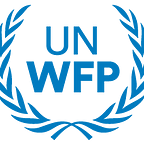We Get Stuff Done.
The United Nations World Food Programme (WFP) provides food assistance across the globe all right. But it also leads the entire United Nations and our partners in the field in coordinating transportation and logistics.
And really, you can’t talk about logistics without learning a few numbers and figures. Here are 10 facts about WFP’s impactful work:
At any given time, there are 5,000 trucks, 70 aircraft and 20 ships delivering WFP food assistance around the planet.
Last year, WFP distributed 3.2 million metric tons, or more than 7 billion pounds, of food.
WFP logistics is going green across the globe, monitoring and cutting fuels for all transportation by air, land and sea.
The WFP-led United Nations air service transported 240,885 passengers to various locations in 2014, including the Central African Republic, South Sudan and Ebola-impacted West Africa — three of the highest level emergencies WFP faced during this time.
Air drops are used only when WFP cannot access vulnerable, hard-to-reach communities due to difficult road and water paths. South Sudan is one location where such drops have been necessary. WFP has also been known to use elephants, donkeys and camels to carry much-needed assistance.
WFP reached 80 million people with food assistance in 82 countries last year.
More than 3,000 WFP logistics staffers manage a network of 650 warehouses worldwide. WFP also manages a global network of Humanitarian Response Depots, in six locations across the globe, where food and relief items for the humanitarian community are stored and dispatched. These are located in Ghana, Italy, Malaysia, Panama, Spain and the United Arab Emirates.
Over the last year, WFP has reduced the average lead time to procure and move food to countries in need, from 120 days to 68 days.
In response to the unprecedented Ebola emergency in Guinea, Liberia and Sierra Leone, WFP set up a logistics infrastructure that included supply networks from ports and airports, a regional logistics hub and numerous logistics bases that would direct incoming medical and other supplies to the places they were needed most.
Right now, WFP is confronted with five high-level emergencies in Iraq, South Sudan, Syria, Yemen and Ebola-impacted West Africa. Entire communities have been destroyed by war and disease, but — with the help of folks like you — WFP has tackled the tough roads, aid blocks and dangerous lands to reach the most vulnerable.
Reporter Scott Pelley told 60 Minutes viewers last year:
“…one of the best ideas America ever had — the World Food Programme.”
We are the world’s logistics leader.
At the end of the day, WFP will do whatever it takes to be there for the families and communities that need a helping hand.
By Aliya Karim
World Food Program USA
